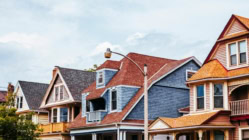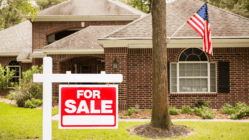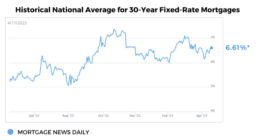
And I thought, here we go again…
The author expresses serious concerns about the frothy housing market, with both sales volume and prices increasing at double-digit rates.
The market may in fact be overheating, BUT the author ignores supply and demand conditions that were starkly different in 2008, making a foreclosure “tsunami” highly unlikely.
Here are the author’s concerns: (1) Mortgage delinquencies are at a 20-year high – even higher than in 2008; (2) two million mortgages will soon go into default; (3) six million homeowners missed their mortgage or rent payments (threatening investors) in September alone; (4) a “third wave” of Coronavirus is just beginning; and (5) unemployment remains relatively high at 8%.
Making matters worse are the foreclosure moratoriums that were imposed in March that have prevented lenders from pursuing foreclosure actions. This is why we have not seen more foreclosures already but will see them en masse in 2021 after lenders can legally start the process again, according to the author.
Here are the reasons why I don’t think the author is correct, and they are largely a repeat of this blog from May: Home Values – This Ain’t 2008.
4 REASONS NOT TO FEAR A FORECLOSURE TSUNAMI
1) Housing supply is much lower than in 2008.
From the 1950s through the early 2000s, an average of 1.5 million new housing units were constructed every year.
Prior to the 2008 meltdown, the average number of new housing units was closer to 2 million per year.
ALL of that excess supply was getting sopped up instantly by flippers and speculators with access to insanely easy financing.
When the financing dried up and the speculators disappeared, the entire country was suddenly walloped with a massive oversupply of housing units that had accumulated over the previous several years.
This massive over-supply was then exacerbated by an onslaught of foreclosures. And excess supply always results in falling prices.
In recent years since the meltdown, an average of only about 900,000 units per year have been constructed – which is much less than the number of new households that were created.
2) Demand will remain much stronger.
Demand bottomed in 2008 for several reasons:
- Speculators and flippers, who significantly influenced the market, disappeared altogether. And yes, we still have ample speculators and flippers, but they represented a much smaller % of the market than they did in 2008.
- Buyers got cold feet in general and backed out of the market, as always happens when economies go into recession and values fall.
- THE BIGGIE – DEMOGRAPHICS: This is something that nobody talked about in 2008 but it is now considered to be a much bigger contributor to the meltdown than previously thought. Household creation or homebuyers coming into homebuying age (early 30s) bottomed out in 2008. In sharp contrast, the number of homebuyers currently coming into homebuying age is soon to hit an all-time high.
3) People don’t “walk” if they have equity.
I have mentioned this numerous times over the years, but after the 2008 meltdown I noticed that homeowners were far more willing to walk away from their obligations if their mortgage balances exceeded the value of their homes.
If, however, they had equity, they would often do whatever they could to hang on to their homes.
In our current environment, homeowners overall have far more equity and are therefore far more likely to do whatever it takes to hold on to their homes (and equity).
4) May not be as bad as we think.
Many delinquent borrowers can in fact make their payments but are playing it safe from a cash position until they see how the COVID-crisis plays out.
In addition, more government assistance may be on the way, the economy does seem to be recovering faster than many observers anticipated, and we should not discount the very strong desire of many unemployed borrowers to get back to work in order to start making their payments again.
Jay Voorhees
Founder/Broker | JVM Lending
(855) 855-4491 | DRE# 1197176, NMLS# 310167
























